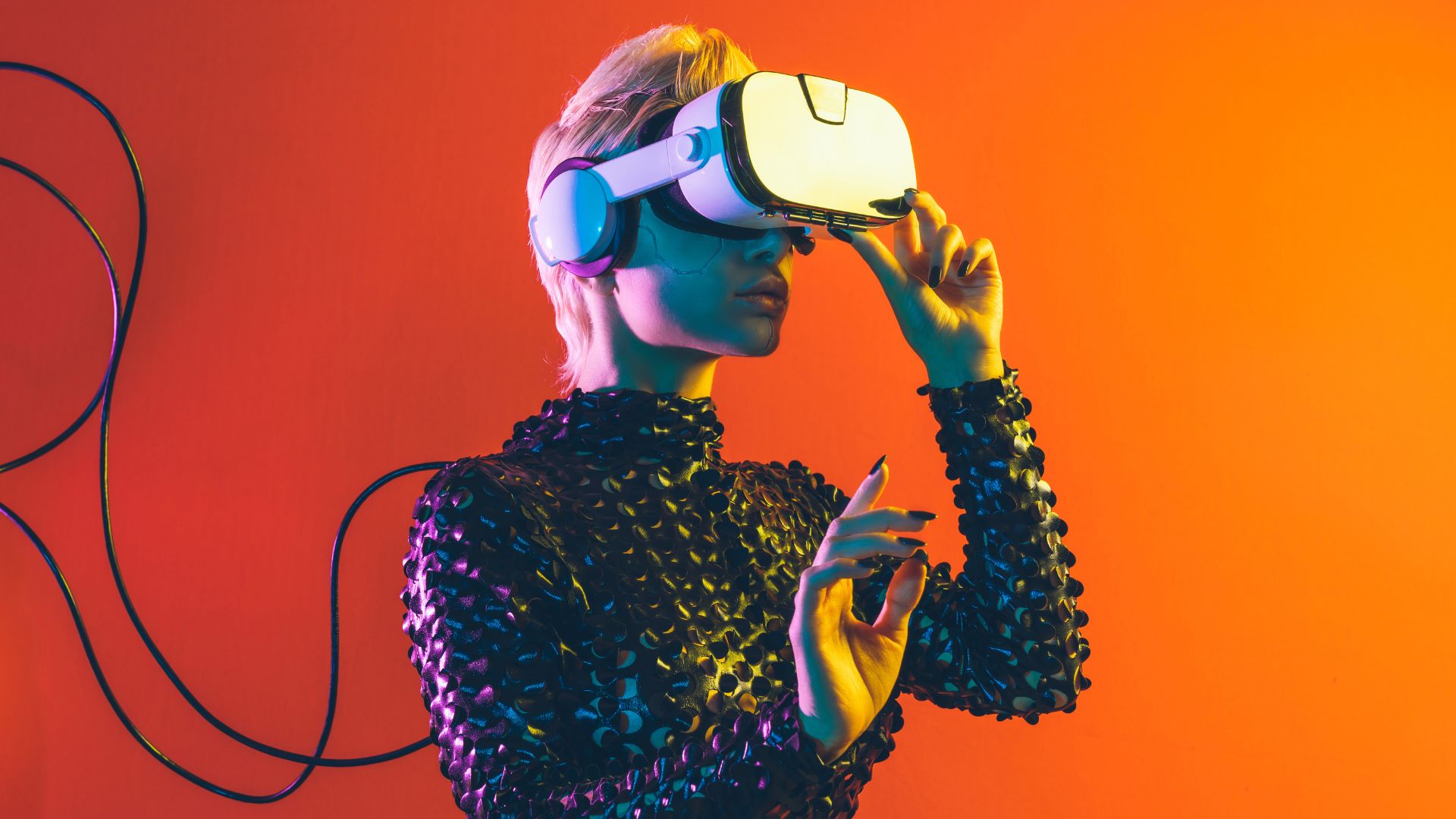Immerse yourself in the fascinating world of virtual reality logo. These aren’t just emblems or symbols, but powerful tools that encapsulate the essence of a brand in a realm where the boundaries of reality are constantly pushed.
Get ready to explore the future of logos through the lens of virtual reality.
Virtual Reality Logo
From Simple Icons to Immersive Branding
Virtual Reality logo have evolved significantly, transforming from simple icons to immersive branding tools. Once mere symbols, virtual reality logo have become interactive, dynamic experiences. For instance, in the early days, VR companies primarily used simplistic icons devoid of deeper interaction–the logo of California-based VR company Oculus Rift in 2012 offers a classic example.
The Role of Color and Shape in VR Logo Design
Color and shape are integral to VR logo design, playing an essential role in influencing perceptions and evoking emotions. Aesthetics, too, carry significant weight. Smooth curves and dynamic shapes, for instance, can suggest movement, fluidity, and innovation. These forms, exemplified by Sony’s PlayStation VR logo, send a strong message of cutting-edge technology.
Crucial Elements in Designing a Virtual Reality Logo
Simplicity vs. Complexity in virtual reality logo
In the sphere of virtual reality logo design, striking a balance between simplicity and complexity proves vital. Oculus Rift, Sony PlayStation VR, and HTC Vive logos exemplify this balance. You’ll often find that the most successful virtual reality logo effortlessly communicate the brand’s essence. But, they do so without becoming overly complex or unfairly demanding of the audience’s cognitive load.
Incorporating Interactivity into Logo Design
Interactivity finds a natural home within virtual reality logo. More than just static images, virtual reality logo, including those of HTC Vive and Sony PlayStation VR, can morph into immersive interactive experiences. Incorporating interactive elements into virtual reality logo offers companies a powerful way to engage with their target audience.
Best Practices for Creating Your Own VR Logo
Crafting a compelling Virtual Reality (VR) logo demands a blend of creative insight and strategic thinking. From understanding the target audience to collaborating effectively with a designer, several factors contribute to designing a VR logo that resonates with users and stands out in the market.
Understanding Your Audience
Knowing your audience demands more than mere demographic identification. It calls for a deep understanding of their preferences, gaming habits, and VR technology’s role in their lives. For instance, if your audience primarily consists of teenagers and young adults, a trendy, dynamic design might be preferred. On the other hand, if your users are professionals using VR for simulations, a more sophisticated, minimalist design may be appreciated.
Tips for Working with a Designer
When collaborating with a designer, clear and frequent communication is essential. Establish the objectives and scope of the logo design project at the beginning, and maintain open lines of dialogue throughout its execution. It may be helpful to familiarize the designer with your VR product or service, providing a hands-on experience if possible to get the ‘feel’ of the brand.
Additionally, based on past successful designs, such as those from Oculus Rift, Sony PlayStation VR, and HTC Vive, it’s advisable to incorporate immersive elements and meaningful symbolism into the design. These elements not only encourages user engagement but also maintains consistent branding across various VR platforms.
Must Know
The evolution of virtual reality logo reveals a fascinating interplay between simplicity and complexity. It’s through this delicate balance that industry leaders like Oculus Rift, Sony PlayStation VR, and HTC Vive have crafted successful logos that resonate with users. They’ve demonstrated the power of a well-designed VR logo in enhancing brand identity and user engagement across various platforms. The innovation in design is evident, with immersive elements and symbolism playing a pivotal role. But it’s not just about creativity. It’s also about understanding the target audience and fostering effective collaboration with designers. Market research and clear communication are key. So, as we navigate the exciting landscape of VR technology, let’s remember the importance of a strong, engaging virtual reality logo.
